 Operation and Maintenance
Operation and Maintenance
 Linux Operation and Maintenance
Linux Operation and Maintenance
 Jenkins installation tutorial on linux server (picture)
Jenkins installation tutorial on linux server (picture)
Jenkins installation tutorial on linux server (picture)
Jenkins is an open source continuous integration tool written in java and is currently widely used by companies at home and abroad. This chapter teaches you how to install Jenkins on the linux server.
Jenkins is an open source continuous integration tool written in java and is currently widely used by companies at home and abroad. This chapter teaches you how to install Jenkins on a Linux server.
1. Obtain a linux server
To install git under linux, you must first have a linux server. As a novice , the machines on hand must all be Windows, and installing a virtual machine is simply torture for a novice like me; the simplest way to obtain a Linux server here is to rent one from Alibaba Cloud. Select CentOS7.3 64-bit as the image.

2. Install jdk
The operation of Jenkins requires jdk, so we must install jdk before installing Jenkins . Students who have no installation experience can refer to my other tutorial on installing jdk on a Linux server. Portal: Install jdk on the linux server
3. Install Jenkins with yum
It is recommended to use yum to install Jenkins, which is the simplest and most convenient.
There is no Jenkins in yum repos by default. You need to add the Jenkins repository to yum repos first.
sudo wget -O /etc/yum.repos.d/jenkins.repo https://pkg.jenkins.io/redhat-stable/jenkins.repo sudo rpm --import https://pkg.jenkins.io/redhat-stable/jenkins.io.key

yum installation Jenkins
yum install jenkins
Then you can see that the system starts to download and install automatically.
When prompted whether to download, enter y and press Enter.
Wait patiently for the installation to complete.
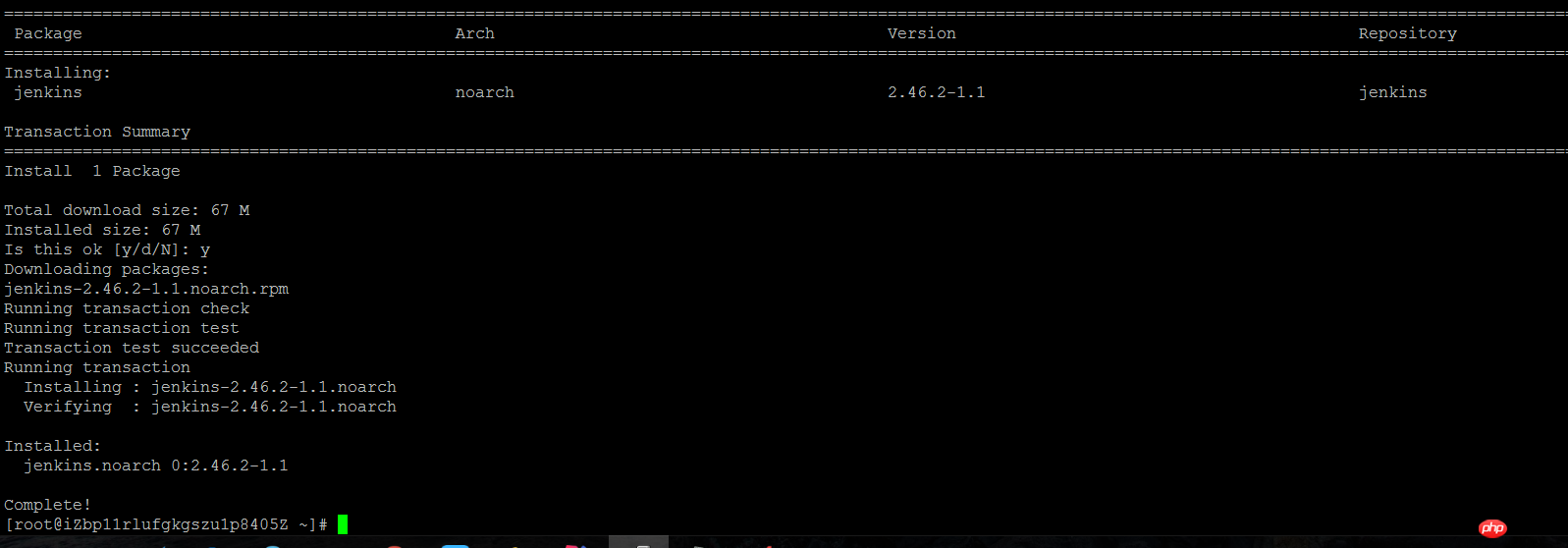
#Now Jenkins has been installed, but it is best to modify the configuration slightly before starting it. By default, Jenkins is started using the Jenkins user, but this user is not currently granted permissions by the system. Here we change the startup user to root. In addition, the default port of Jenkins is 8080, which conflicts with the default port of tomcat. We also modify the default port. port.
Enter the command to enter the Jenkins configuration file
vi /etc/sysconfig/jenkins
It is easy to find in the configuration file
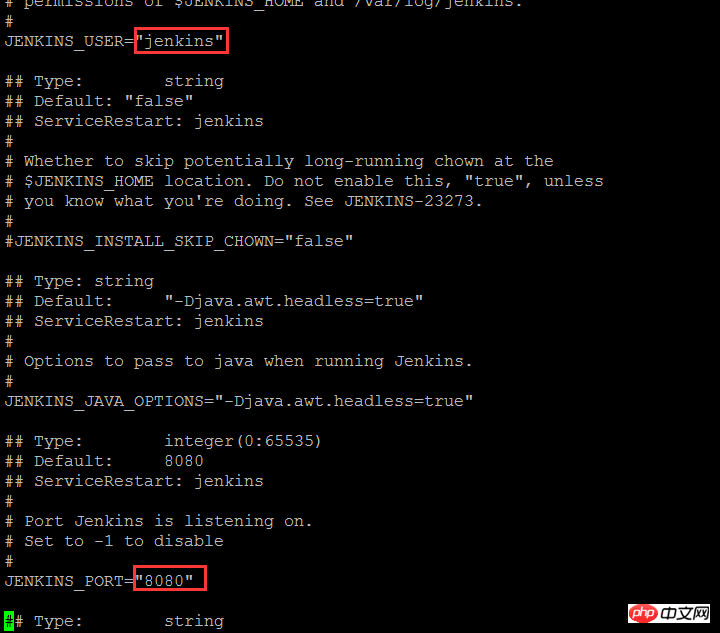
Modify the configuration here
JENKINS_USER="root" JENKINS_PORT="8081"
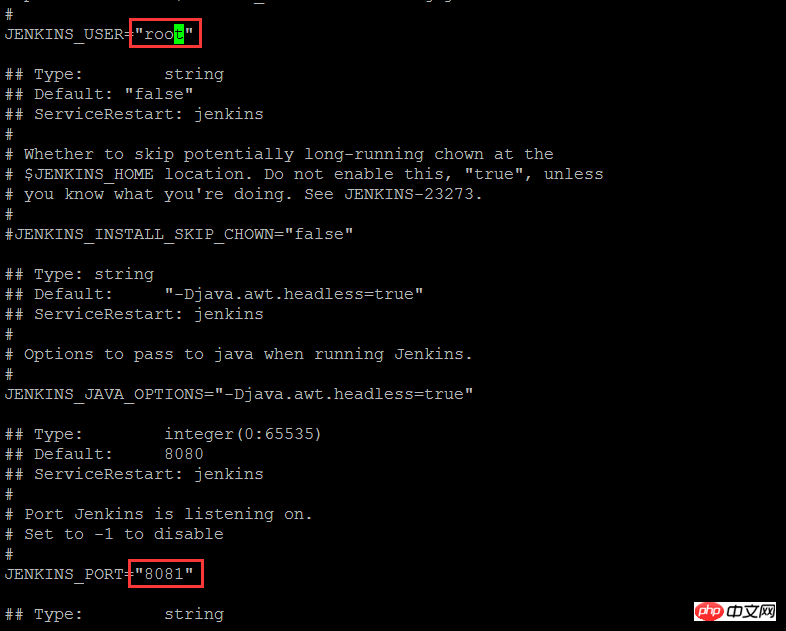
After modifying the configuration, saveExit.
Okay, now the configuration file has been modified and Jenkins can be started.
Enter the startup command to start the Jenkins service.
service jenkins start

OK indicates that Jenkins started successfully.
Enter ip:8081 in the browser to enter the Jenkins login page.
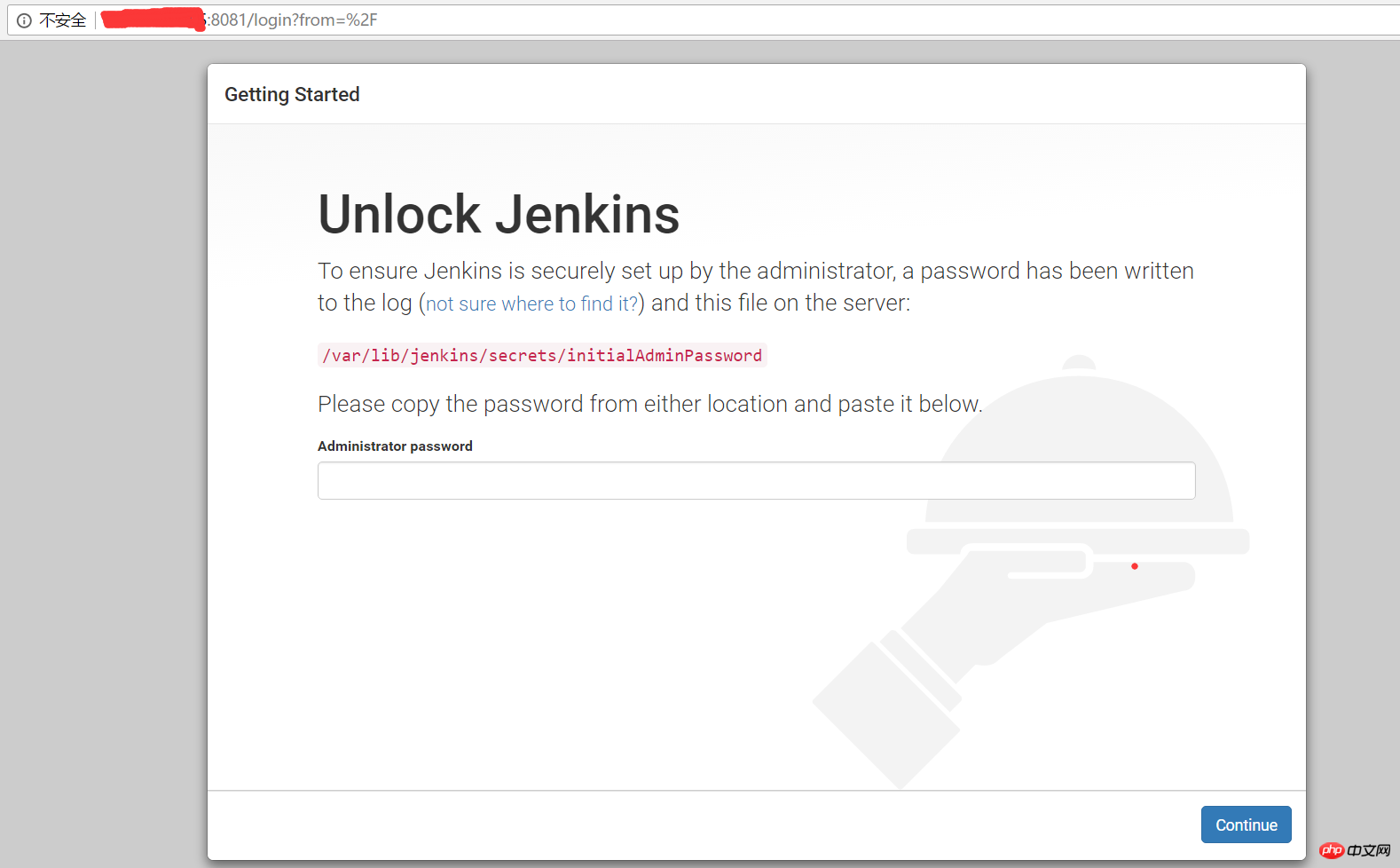
After entering the login page, Jenkins prompts us to enter the super administrator password to unlock. According to the prompts, we can find the password in the /var/lib/jenkins/secrets/initialAdminPassword file.
Enter the command to find the password.
tail /var/lib/jenkins/secrets/initialAdminPassword

After finding the password, copy the password, paste it into the Jenkins unlock page, and click Continue to continue the initialization configuration. After a short wait, you will enter the plug-in installation page.
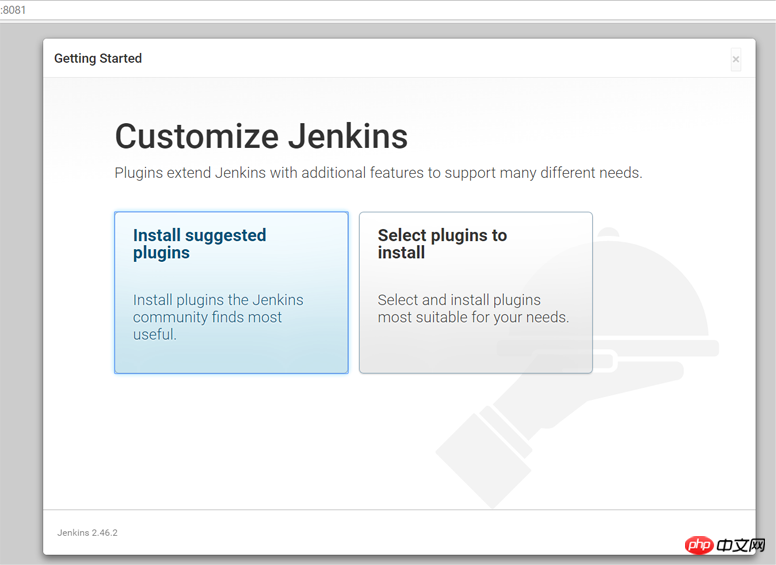
Here we click Install suggested plugins to install the default plugins. Of course, you can also click another button to install the specified plugins.
After clicking, the page enters the plug-in download and installation page.
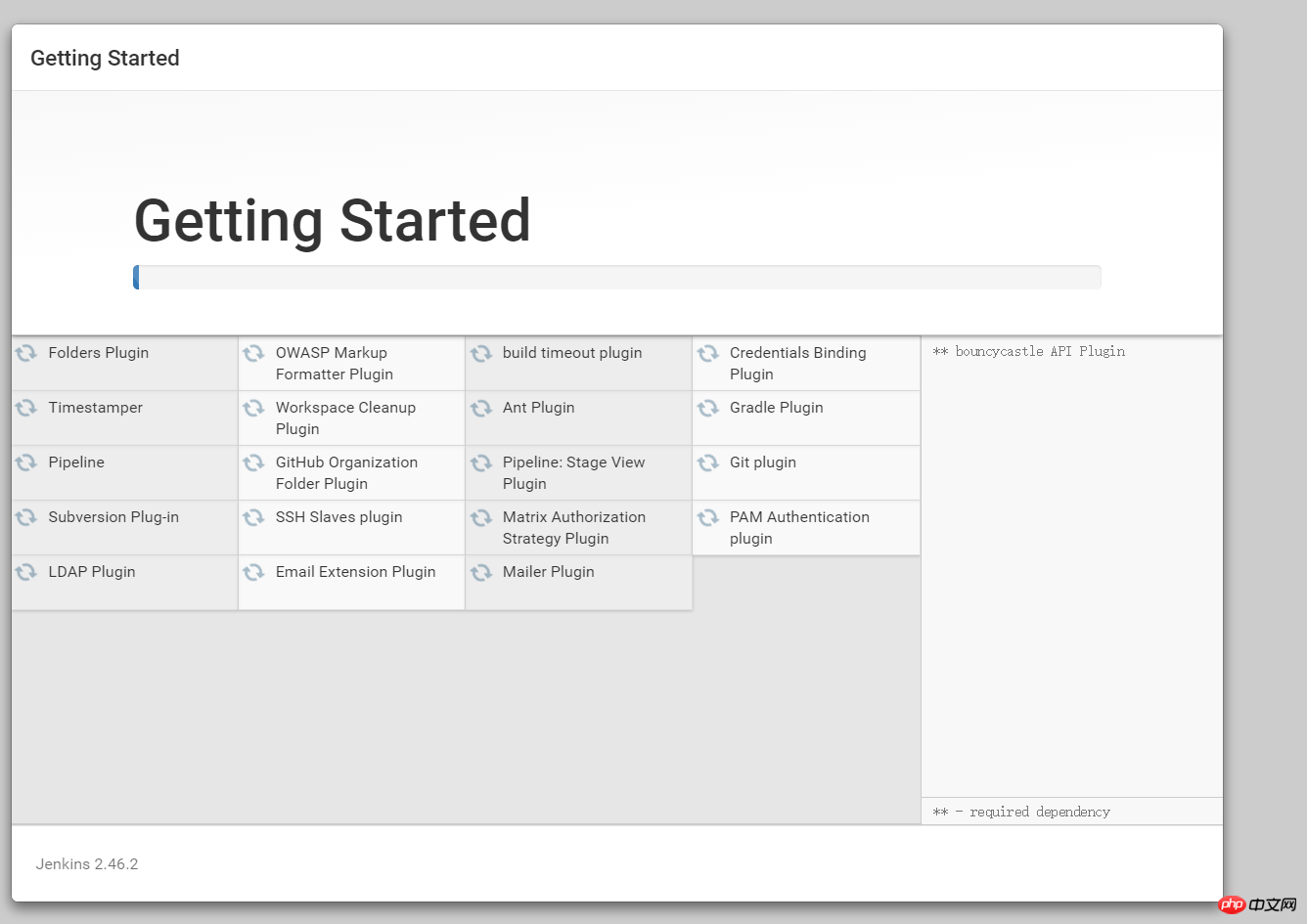
Wait patiently for all installations to be completed. After the installation is completed, the page automatically enters the administrator accountRegistration page.
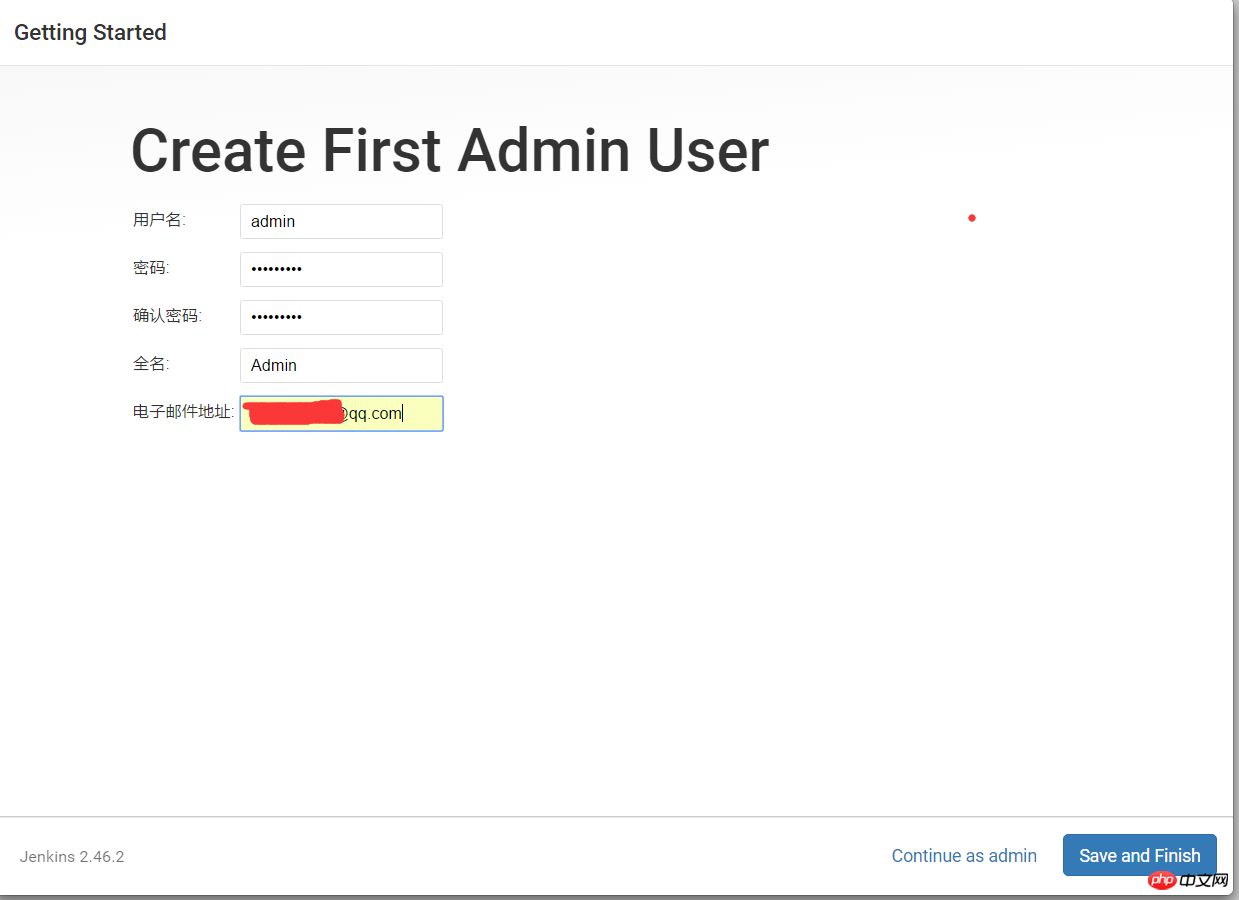
#This page must be familiar to everyone, please enter your information to register. After entering the information, click Save and Finish.
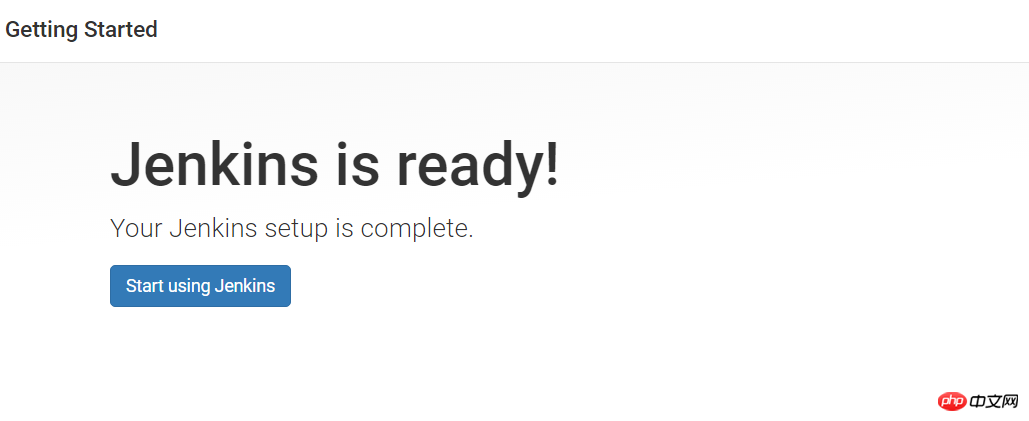
Click Start using Jenkins to enter the main Jenkins page.

The above is the detailed content of Jenkins installation tutorial on linux server (picture). For more information, please follow other related articles on the PHP Chinese website!

Hot AI Tools

Undresser.AI Undress
AI-powered app for creating realistic nude photos

AI Clothes Remover
Online AI tool for removing clothes from photos.

Undress AI Tool
Undress images for free

Clothoff.io
AI clothes remover

AI Hentai Generator
Generate AI Hentai for free.

Hot Article

Hot Tools

Notepad++7.3.1
Easy-to-use and free code editor

SublimeText3 Chinese version
Chinese version, very easy to use

Zend Studio 13.0.1
Powerful PHP integrated development environment

Dreamweaver CS6
Visual web development tools

SublimeText3 Mac version
God-level code editing software (SublimeText3)

Hot Topics
 1377
1377
 52
52
 Unable to log in to mysql as root
Apr 08, 2025 pm 04:54 PM
Unable to log in to mysql as root
Apr 08, 2025 pm 04:54 PM
The main reasons why you cannot log in to MySQL as root are permission problems, configuration file errors, password inconsistent, socket file problems, or firewall interception. The solution includes: check whether the bind-address parameter in the configuration file is configured correctly. Check whether the root user permissions have been modified or deleted and reset. Verify that the password is accurate, including case and special characters. Check socket file permission settings and paths. Check that the firewall blocks connections to the MySQL server.
 C language conditional compilation: a detailed guide for beginners to practical applications
Apr 04, 2025 am 10:48 AM
C language conditional compilation: a detailed guide for beginners to practical applications
Apr 04, 2025 am 10:48 AM
C language conditional compilation is a mechanism for selectively compiling code blocks based on compile-time conditions. The introductory methods include: using #if and #else directives to select code blocks based on conditions. Commonly used conditional expressions include STDC, _WIN32 and linux. Practical case: Print different messages according to the operating system. Use different data types according to the number of digits of the system. Different header files are supported according to the compiler. Conditional compilation enhances the portability and flexibility of the code, making it adaptable to compiler, operating system, and CPU architecture changes.
 【Rust Self-study】Introduction
Apr 04, 2025 am 08:03 AM
【Rust Self-study】Introduction
Apr 04, 2025 am 08:03 AM
1.0.1 Preface This project (including code and comments) was recorded during my self-taught Rust. There may be inaccurate or unclear statements, please apologize. If you benefit from it, it's even better. 1.0.2 Why is RustRust reliable and efficient? Rust can replace C and C, with similar performance but higher security, and does not require frequent recompilation to check for errors like C and C. The main advantages include: memory security (preventing null pointers from dereferences, dangling pointers, and data contention). Thread-safe (make sure multi-threaded code is safe before execution). Avoid undefined behavior (e.g., array out of bounds, uninitialized variables, or access to freed memory). Rust provides modern language features such as generics
 What are the 5 basic components of Linux?
Apr 06, 2025 am 12:05 AM
What are the 5 basic components of Linux?
Apr 06, 2025 am 12:05 AM
The five basic components of Linux are: 1. The kernel, managing hardware resources; 2. The system library, providing functions and services; 3. Shell, the interface for users to interact with the system; 4. The file system, storing and organizing data; 5. Applications, using system resources to implement functions.
 How to solve mysql cannot be started
Apr 08, 2025 pm 02:21 PM
How to solve mysql cannot be started
Apr 08, 2025 pm 02:21 PM
There are many reasons why MySQL startup fails, and it can be diagnosed by checking the error log. Common causes include port conflicts (check port occupancy and modify configuration), permission issues (check service running user permissions), configuration file errors (check parameter settings), data directory corruption (restore data or rebuild table space), InnoDB table space issues (check ibdata1 files), plug-in loading failure (check error log). When solving problems, you should analyze them based on the error log, find the root cause of the problem, and develop the habit of backing up data regularly to prevent and solve problems.
 Can mysql run on android
Apr 08, 2025 pm 05:03 PM
Can mysql run on android
Apr 08, 2025 pm 05:03 PM
MySQL cannot run directly on Android, but it can be implemented indirectly by using the following methods: using the lightweight database SQLite, which is built on the Android system, does not require a separate server, and has a small resource usage, which is very suitable for mobile device applications. Remotely connect to the MySQL server and connect to the MySQL database on the remote server through the network for data reading and writing, but there are disadvantages such as strong network dependencies, security issues and server costs.
 Solutions to the errors reported by MySQL on a specific system version
Apr 08, 2025 am 11:54 AM
Solutions to the errors reported by MySQL on a specific system version
Apr 08, 2025 am 11:54 AM
The solution to MySQL installation error is: 1. Carefully check the system environment to ensure that the MySQL dependency library requirements are met. Different operating systems and version requirements are different; 2. Carefully read the error message and take corresponding measures according to prompts (such as missing library files or insufficient permissions), such as installing dependencies or using sudo commands; 3. If necessary, try to install the source code and carefully check the compilation log, but this requires a certain amount of Linux knowledge and experience. The key to ultimately solving the problem is to carefully check the system environment and error information, and refer to the official documents.
 MySQL can't be installed after downloading
Apr 08, 2025 am 11:24 AM
MySQL can't be installed after downloading
Apr 08, 2025 am 11:24 AM
The main reasons for MySQL installation failure are: 1. Permission issues, you need to run as an administrator or use the sudo command; 2. Dependencies are missing, and you need to install relevant development packages; 3. Port conflicts, you need to close the program that occupies port 3306 or modify the configuration file; 4. The installation package is corrupt, you need to download and verify the integrity; 5. The environment variable is incorrectly configured, and the environment variables must be correctly configured according to the operating system. Solve these problems and carefully check each step to successfully install MySQL.



